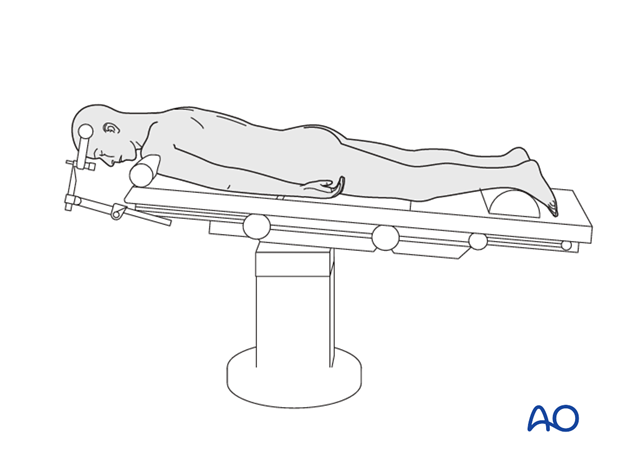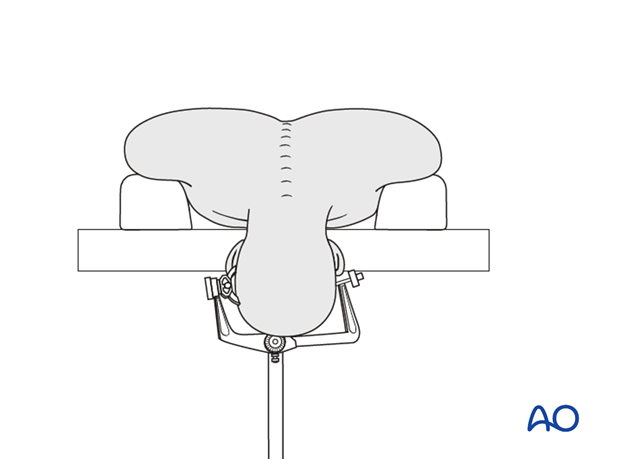Prone position for cervical spine surgery
1. Positioning
The patient is anaesthetized and intubated while taking care not to mobilize the unstable cervical spine.
The head is attached to a Mayfield clamp if necessary.
When selecting the pin entry points, ensure that the Mayfield clamp can be rotated freely over the nose once the patient is put into the prone position.
Alternatively a halo can also be used.

The patient is anaesthetized and intubated while taking care not to mobilize the unstable cervical spine.
The head is attached to a Mayfield clamp if necessary.
When selecting the pin entry points, ensure that the Mayfield clamp can be rotated freely over the nose once the patient is put into the prone position.
Alternatively a halo can also be used.

2. Anesthesia
In patients with spinal cord injury, it is essential to avoid hypotensive anesthesia and the mean arterial blood pressure should be maintained above 80 mmHg.
3. Preoperative antibiotics
Antibiotics should be administered 30-60 min prior to the incision.
A cephalosporin antibiotic with good gram positive coverage is generally recommended.
4. Spinal cord monitoring
Spinal cord monitoring is optional.
5. Fluoroscopy/x-ray control
Preoperative fluoroscopy is mandatory. Before draping, you should ensure that a good lateral fluoroscopy view can be obtained throughout all levels being instrumented. However, this can be challenging or even impossible at the cervico thoracic junction.
The incision can be planned based on the lateral fluoroscopic view.














